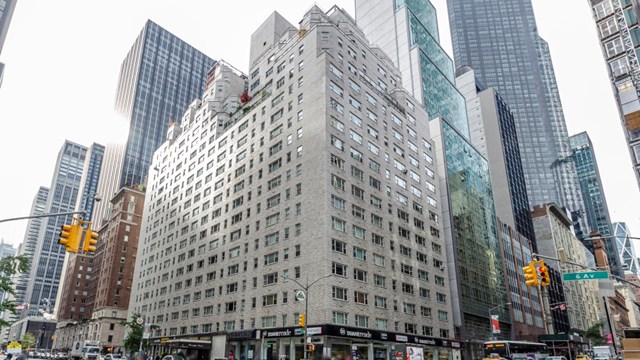
Like most companies, co-ops and condos have two important, yet distinct budgets which allow boards and owners to manage the day-to-day and long-term financial requirements of their buildings. The operating budget includes recurring expenses such as salaries, taxes, utilities, insurance and maintenance items. The previous year’s expenses are generally a good indicator for the next year’s budget.
Capital budgets are the long-term budgets that improve building conditions. Capital budget items require a different kind of planning because the expenditures are infrequent and unfamiliar. Capital budgets allow more latitude and evaluation: You have to heat your building (operating expense), but you don’t have to replace the roof (capital expenditure) next year.
Though both budgets support the goals of the building owners by providing comfort and utility to residents, capital budgets allow a well-run co-op or condo to anticipate the needs of residents while balancing them against financial considerations. And, unlike operating budgets, capital expenditures frequently improve the value of an asset.
Capital budgets should span four to six years. Longer term budgets are unlikely to be reasonably accurate. No budget will be perfectly accurate (budgets within 15 percent of actual cost are acceptable), but it will help the board prioritize and build financial reserves (or plan borrowing) for major expenditures. Capital budgets should be reviewed and updated annually.
The priorities in the capital budget are ranked by making an existing conditions assessment or building survey. An architect or engineer can conduct a comprehensive building survey and make a capital budget. The survey will usually include an evaluation of building envelope (façade, roof, windows), mechanical systems (heating and plumbing), electrical distribution, and interior common spaces A good survey will also include an objective evaluation of input from residents, building staff, building management, vendors that provide building maintenance and possibly other specialist design professionals (architects or engineers). It is important that a single, complete report be prepared that sets priorities and lays out the reasoning behind the prioritization. The detail of the survey will vary dramatically depending on the size, complexity and usage requirements of the building.
There are several ways co-ops and condos can significantly reduce costs by using a capital budget and building survey. Avoiding “emergency” repairs which could have been predicted is one important way to save money. Emergency repairs almost always cost more than planned repairs and may not be competitively bid due to time constraints. For example, if an old roof is patched year after year to stop leaks, the repairs and cost of damage can easily cost more than replacing the entire roof when it starts to deteriorate.
On the other hand, replacement can be made too soon. If a minor repair can extend the life of an asset a few years with little risk of building damage or danger to the public, the work should probably be deferred and save the cost of borrowing money or earning a return on an investment.
Perhaps the greatest savings comes in combining small maintenance projects into a single, larger improvement project. Vendors are much more competitive on bigger projects and the fixed costs of a construction project don’t vary as significantly relative to the overall size of the project. Well-planned capital improvement projects can also be scheduled at the convenience of the residents and are therefore less likely to cause repeated inconveniences (noise, etc.) to building residents.
Common capital priorities (in general order of importance) are: life safety, preventive maintenance, operating cost reduction, basic comfort, and aesthetic improvement.
Life Safety and Health. The most common life safety issues include security and façade maintenance (following Local Law 11 inspections in New York City). The presence of asbestos, lead paint and mold are common building management concerns that may need to be managed and may need to be remediated in older buildings.
Preventive Maintenance. The major preventive maintenance items include exterior waterproofing, elevator overhauls, plumbing and heating plant items. The point of preventive maintenance projects is to reduce the cost and inconvenience to residents of other types of “emergency” repairs or operating expenses. Frequently, “emergency” repairs are very predictable and can be avoided. Leaks from the exterior envelope, plumbing and heating pipes can cause major damage in apartments. Continuous sources of leaks can create ideal conditions for the growth of mold.
Operating Cost Reduction. Replacing lighting fixtures, upgrading heating controls, insulating roofs or installing insulating windows are common ways of reducing operating costs. Some buildings have very expensive energy sources and may benefit from increasing their energy source flexibility. New fluorescent lighting fixtures, for example, can be 30% more efficient than fluorescent fixtures installed just ten years ago and have a better quality of light.
Basic Comfort. Basic comfort items can include things like window replacement in buildings where windows leak air or water. Older buildings may require electrical or plumbing upgrades because they were not designed to support the appliances (air conditioners, washers and dryers, etc.) residents expect today. Modern telecommunications require older buildings to upgrade telephone, cable and data wiring.
Aesthetic Improvement. This category includes improvements to the building exterior and common areas like the lobby, hallways, and basement. Carefully designed aesthetic improvements can be very cost-effective by increasing apartment resale values.
Capital expenditures that reduce operating costs or reduce future maintenance requirements should be evaluated based on financial payback like any investment. A good rule of thumb: If a project will pay for itself within five to seven years, it should be undertaken. One publication that can be very helpful in identifying high operating costs is The Comparative Study of Operating Costs published by The Council of New York Cooperatives and Condominiums (CNYC).
Descriptive building surveys and capital budgets help keep residents better informed about what’s going on in their building. Having a written, objective plan well in advance of large expenditures makes it easier for these expenditures to have been carefully considered and understood by the board and residents.
Carefully planning capital expenditures can significantly reduce overall building expenditures while maximizing the use and enjoyment of the building.
Douglas J. Lister, AIA, is a New York City architect with his own firm specializing in historic preservation and renovation, multi-unit housing, and office building and commercial repairs and inspections.






2 Comments
Leave a Comment